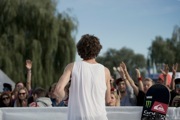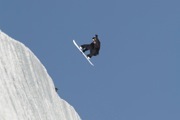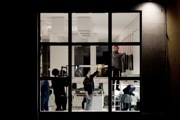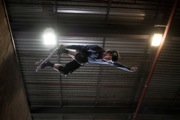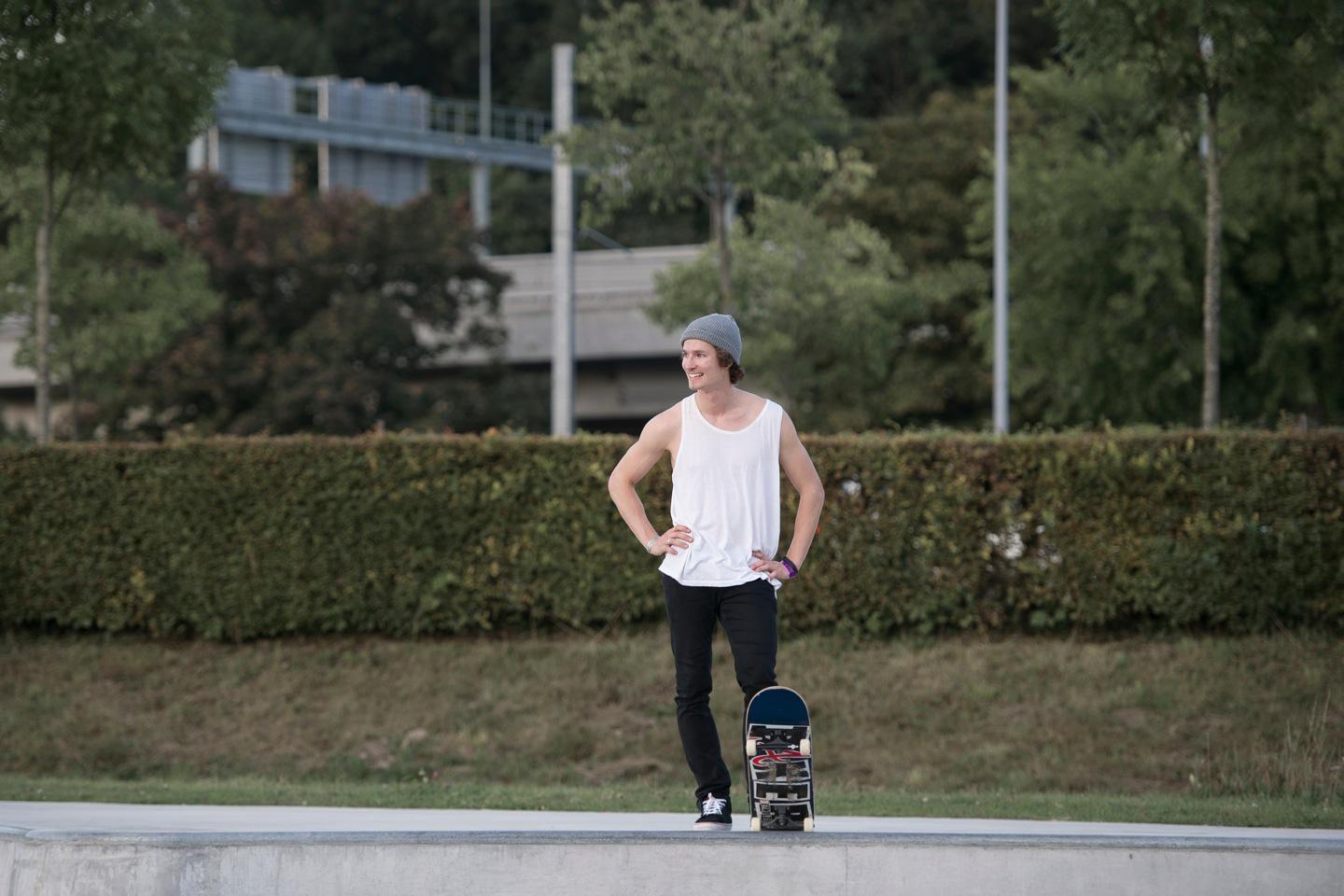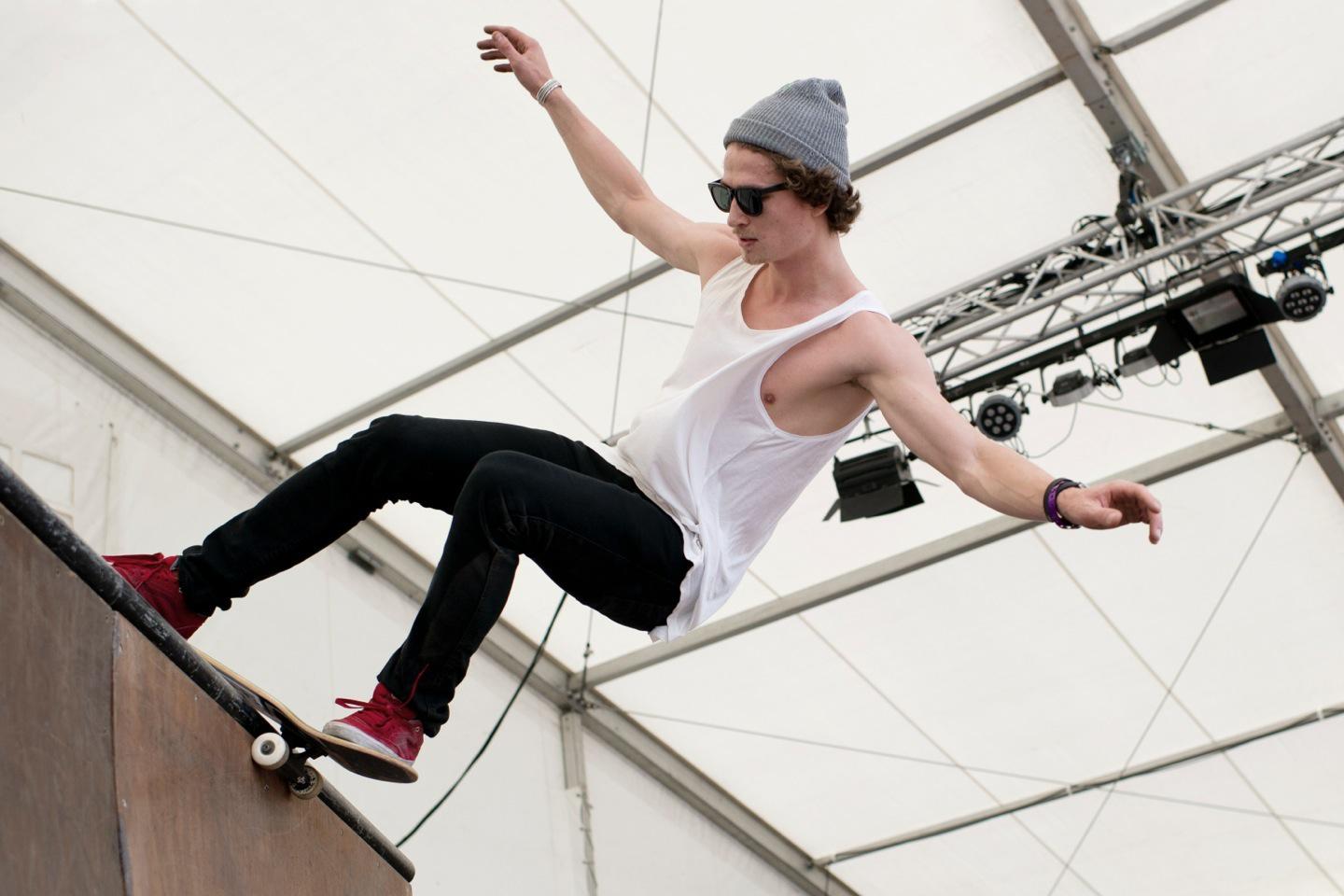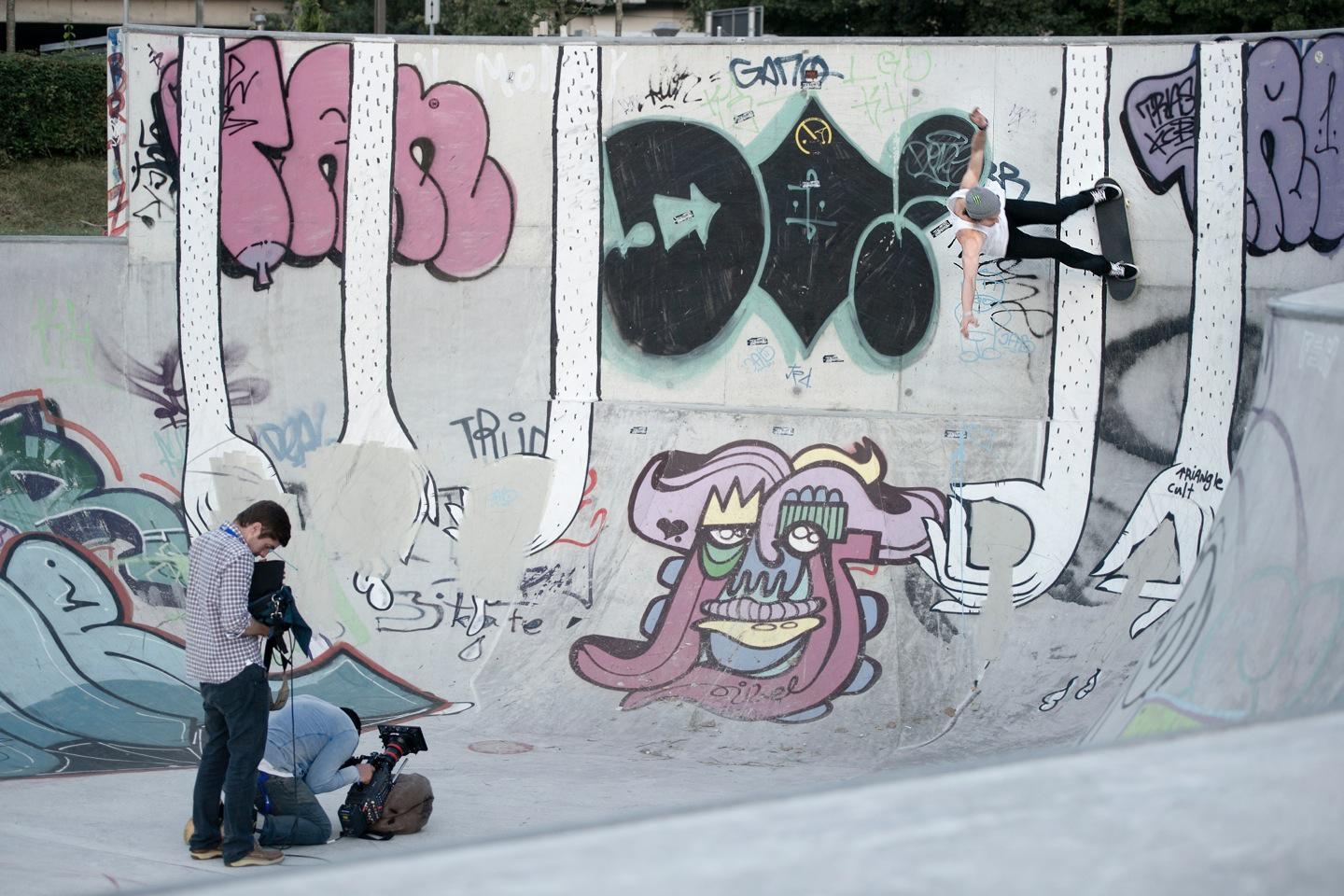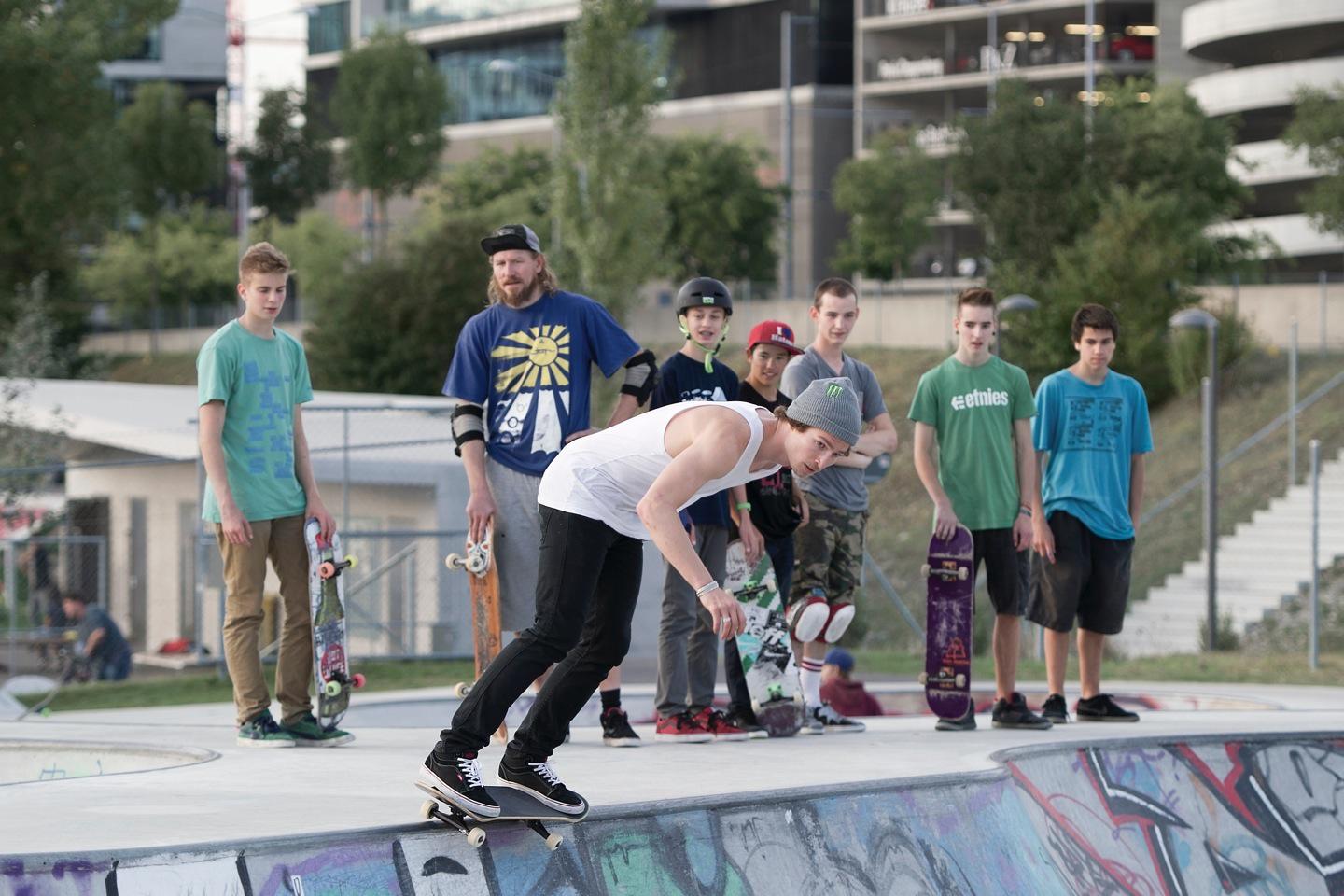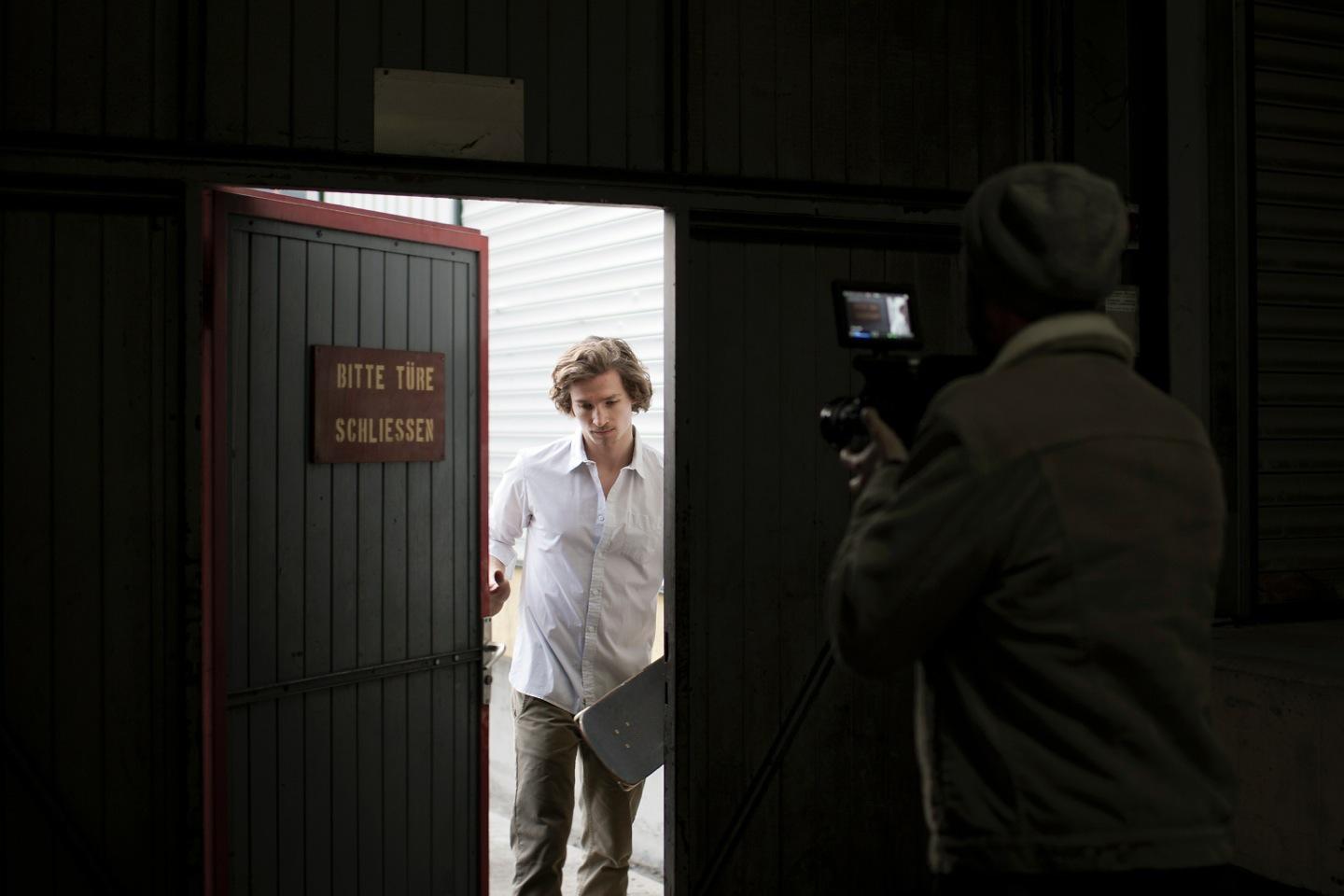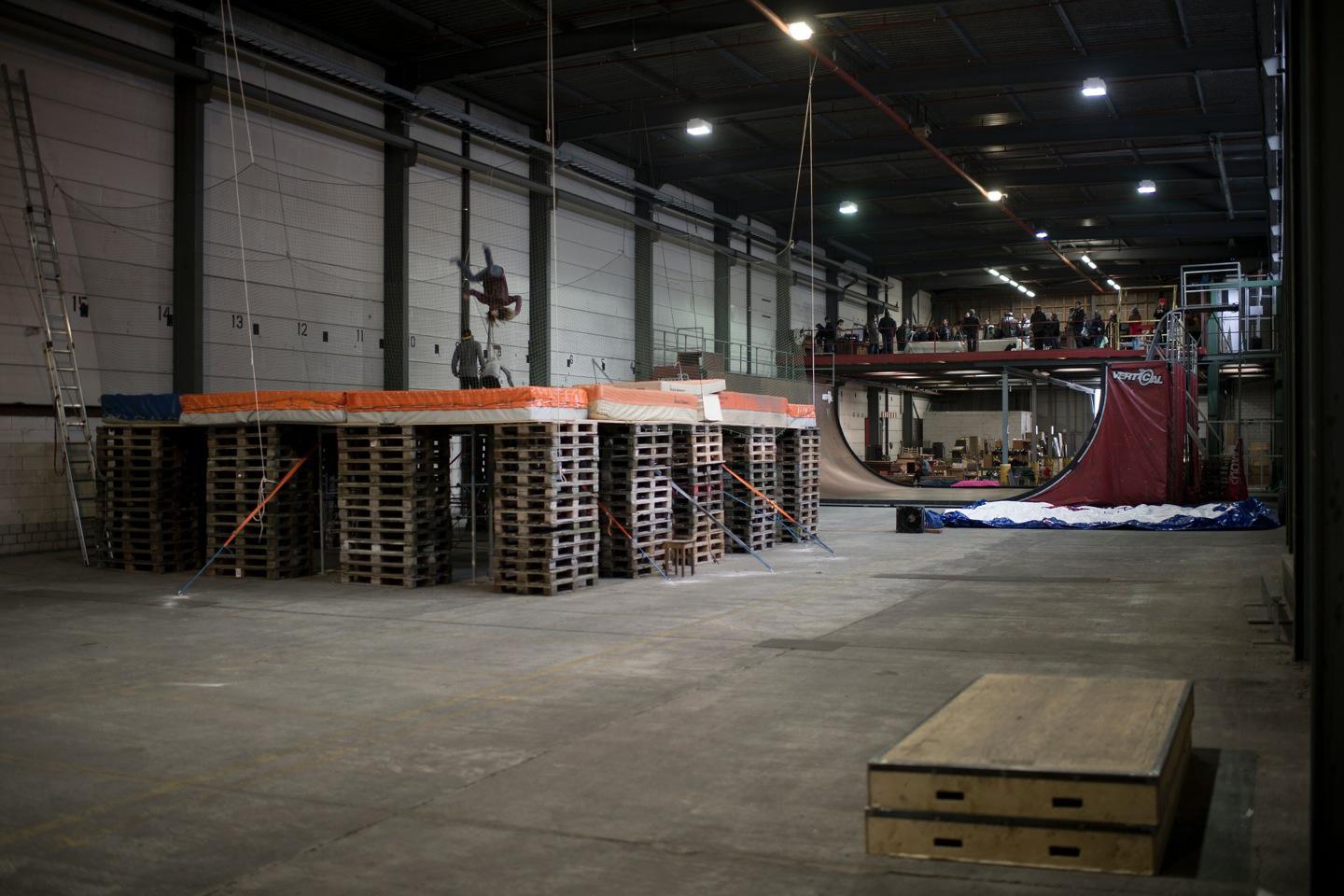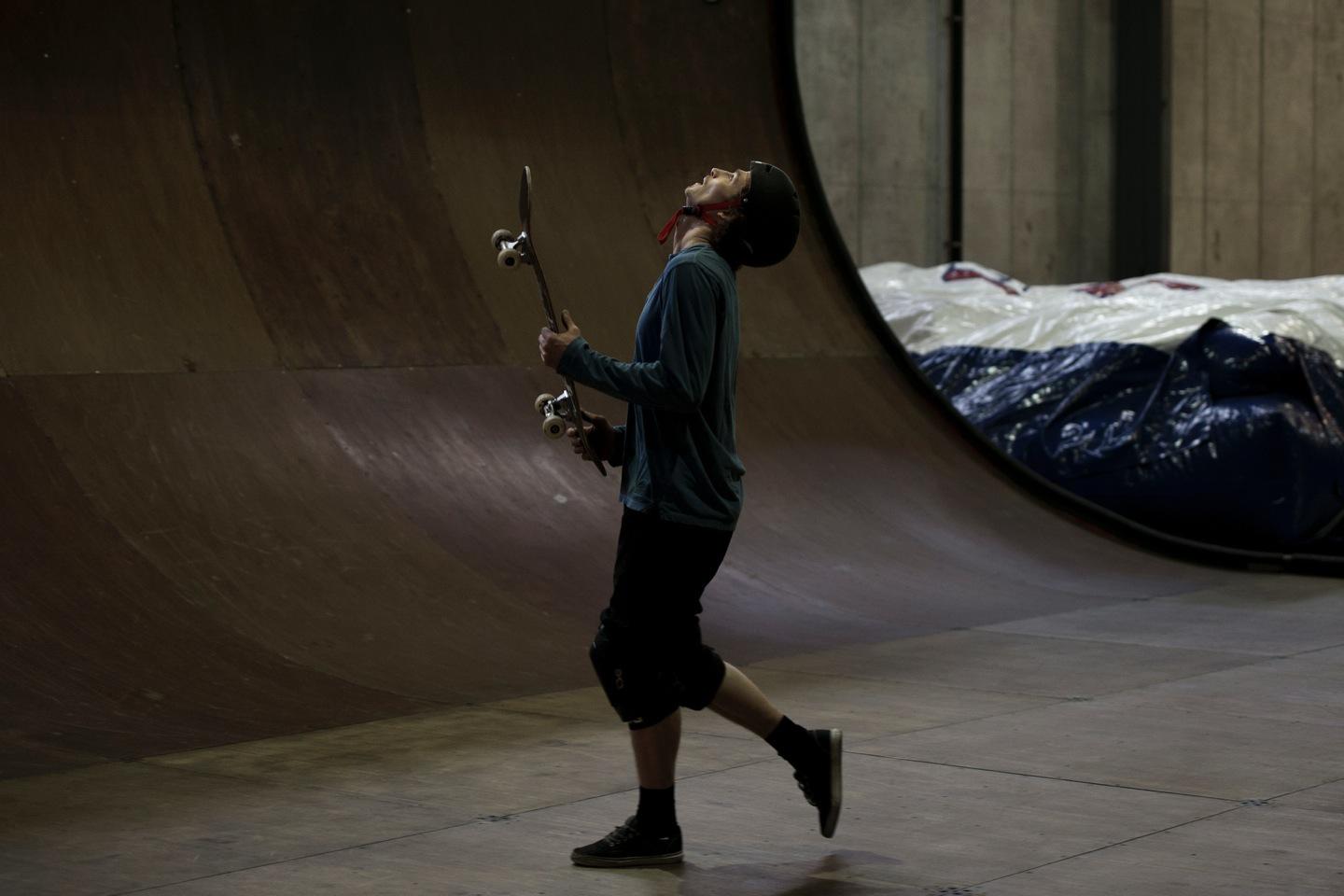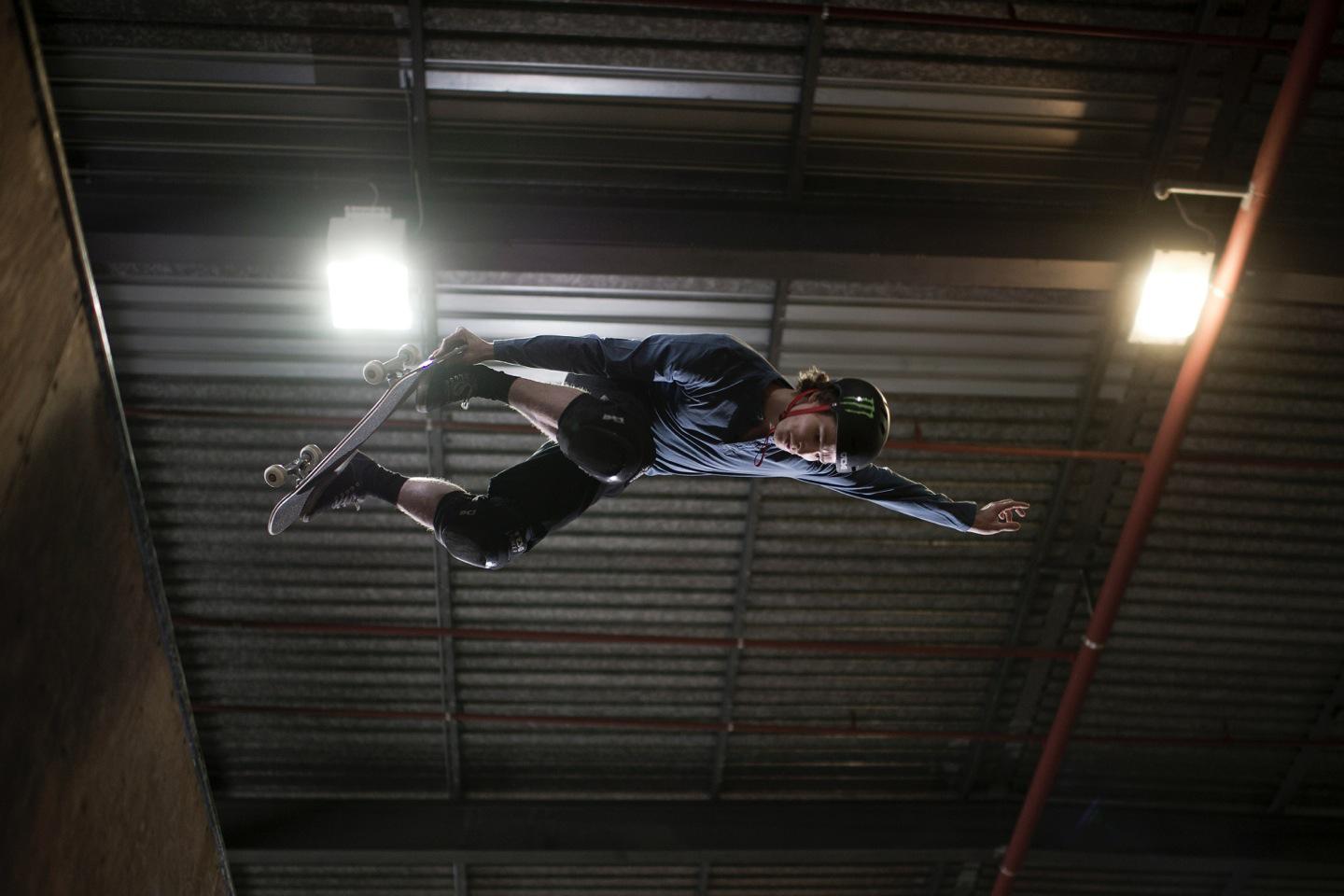Shaun White, the perennial champion, looms large. For he is not just a snowboarder, but – crucially – he’s a skateboarder too.
An industrial building in Freienbach in the canton of Schwyz. Iouri Podladtchikov lives in the neighbouring village of Wollerau. This 500 square metres of poorly lit, barren space, where rain can be heard pounding on the roof and a single radiator tries to keep the cold at bay is at the heart of Podladtchikov’s Olympic campaign. He was given the space to rent for a year and a half as a thank-you for giving a talk to some start-up entrepreneurs, and the contract will run out in March, a couple of weeks after the Olympic Games. The question of what happens then remains open, in every respect.
But that is not relevant right now – only the present matters. And at this moment Podladtchikov is warming up with some somersaults on the trampoline, a five-by-three-metre structure in the middle of the hall, perched on countless wooden pallets and tied down with thick ropes – a scruffy arrangement that rather resembles a building site. On the mats around the trampoline sit Podladtchikov’s colleagues from the Swiss snowboarding team; they too are welcome to use the hall – as are the local youngsters who come in once a week. But sometimes it is just him and his trainer, Marco Bruni, or his team mate Christian Haller; sometimes Podladtchikov trains alone. Sometimes he trains four hours a day for seven days in a row; sometimes he takes a three-day break. His body, he says, tells him when it’s time for a break: “I have ignored it thousands of times. But I now know I can rely on its signals.”
The trampoline is not the reason why Podladtchikov dug deep into his pockets to rent the building: right next to it is a 3.7-metre-high vert ramp for skateboarding. This too is only rented – at a price of 40,000 Swiss francs for one and a half years. It is one of only two in Switzerland, but this one here, Podladtchikov says, is “state of the art”, and he adds that he is earning enough at the moment to afford the investment.
A year and a half ago he realised that he could no longer expect to advance his technique solely through training on snow. He wondered what Shaun White does differently – and came upon a clear answer: White is not just the world’s best snowboarder, he is also one of the world’s best skateboarders. In the almost 20-year history of the X Games, he is the only competitor to have won gold in both winter and summer, taking nine gold medals as a snowboarder in the superpipe and two as a skateboarder on the vert ramp.
Japanese rising star Ayumu Hirano, the 15-year-old who caused a sensation last season, also illustrates the link between snowboarding and skateboarding in his technique. At the X Games in Aspen, where Podladtchikov had to miss the final due to illness, Hirano came second after White. He is one of three, maybe four competitors who, on a good day, can give Podladtchikov and even White something to worry about – he may even do so in Sochi. Podladtchikov calls Hirano “the little guy”, but the Japanese teenager has earned a lot of respect. And Hirano’s sleek and tidy snowboarding style certainly owes a lot to skateboarding.
Podladtchikov knows he could have pushed ahead with skateboarding for training purposes earlier in his career, not least because he was one of Switzerland’s top skateboarders for a while, winning a national youth series at the age of 15. But there was no vert ramp in his area and back when there had been one in Winterthur, he had not seen it as important. “Back when I said it wasn’t important must have been the stupidest move I made in my whole career,” he says. “As a matter of fact, it wasn’t important at that time, as I was winning everything I wanted to win. But it turns out it would have made a difference today.”
And it is important today: as skateboarding is less forgiving than snowboarding, it makes mistakes more glaring so is perfect for training snowboarders’ technique. “It requires more sensitivity,” Podladtchikov says. And as he attempts to explain the difference, it becomes clear that halfpipe snowboarding is just as much about how you move on the ground as it is about artistry in the air: “With snowboarding, your feet are strapped to the board and you can skid around in the snow. You can push off the wall a bit too early or late without falling down right away. With skateboarding, you aren’t attached to the board and you can fall at the smallest slip-up, whether on the flat section or on the steep sides of the vert ramp.” Plus, skateboarding is more intensive than snowboarding, as athletes do not need to trot back up the halfpipe after each run, meaning that more runs can be accomplished in less time. “Skateboarding is a release,” says Podladtchikov. “Skateboarding is like therapy. When I’m skateboarding, I’m totally focused on it. That’s my talent and that’s why so much is going on with me in those moments.”
Since he has had the vert ramp, he has spent countless hours in the hall, especially in summer and autumn when other snowboarders expose themselves to the elements in New Zealand or turn to the desolate landscape of European glaciers – “That is just the worst,” says Podladtchikov. He has never liked snow training between seasons, a fact that has now and again provoked criticism that he does not train enough. But Podladtchikov believes that the opposite is true.
Marco Bruni says: “Experienced snowboarders like him and Shaun do not have to go through every move in the snow. They can prepare themselves on trampolines and skateboards with a precision that can never be achieved in the snow, and then when they get to the mountain it’s just a case of putting into action what’s they have already hammered into themselves.”
Podladtchikov’s team mate Ursina Haller says: “Iouri has the rare ability to hoist himself up to the next level in his head before he does it in the snow. This helps him to avoid injury and enables him to only take well-calculated risks in the snow. He doesn’t hurl himself around like some snowboarders. He is careful, as he knows that the slightest injury could throw him off course.”
Podladtchikov is a city snowboarder, says Haller – a snowboarder whose life on lowland is just as important as his life in the mountains, a snowboarder who does not want to spend every free minute skimming over deep powder snow. And she is right: there is probably no better way of describing Podladtchikov’s role within the snowboarding world, a world which originally arose from youth culture as a symbol of rebellion against well-behaved skiing on manicured slopes and as a celebration of backcountry and free terrain. Snowboarders were originally free spirits who did not care about competitions but let themselves be guided by values like creativity, emotion and expression. But a countermovement arose within that countermovement, helped along by the International Olympic Committee, and by 1998 the snowboard halfpipe had been added to the programme of the Winter Olympics. In Sochi, a second freestyle discipline is being added: slopestyle, a trail featuring jumps and other obstacles.
This development is putting a strain on the snowboarding scene. But not on Podladtchikov, or on White – who, unlike Podladtchikov and most of his other opponents, will be competing in this new Olympic event as well as in the halfpipe. As far as Podladtchikov and White are concerned, there is room in the sport for both creativity and competition. The two men have become symbols for the development of snowboarding into a highly complex, elite sport, with competitors training like gymnasts. In symbolising this side of the sport, the two champions expose themselves to the disapproval of purists. All the more so as they do not appear in the films that bring legions of young snowboarders charging into the cinemas – films that show other snowboarders out in the wilds, cutting through the deep powder snow. In fact, it is astonishing quite how severe the critics of competition can be, considering that snowboarders were once passionate proponents of the “live and let live” philosophy. It could all be so easy – snowboarders could simply choose to view as positive the fact that two such radically different worlds can exist within a single sport.
Podladtchikov mostly keeps his distance from the debate. Instead, he prefers to deliberately break the rules and do what no one would expect of him by, for instance, travelling to the United States at the end of a gruelling winter and the start of a long summer. This is what he did last June, when he went to Mammoth Mountain, California, and for once threw himself into the pipe despite awful weather and terrible snow conditions. In the space of two days he managed to master the triple crippler for the first time – although landing on an air bag rather than snow. This is what he focused on in Breckenridge in December, at the first tournament of the Olympic winter, rather than on his form – because, he says, he had already begun the season with a head start.
In one winter, snowboarders can expect to have maybe ten really good snow days when they can work on achieving perfection. On days like these, it is not just the halfpipe, the snow and the weather but also the athletes themselves that have to be in the right condition. Ideally, they are basically ready to compete. If Podladtchikov does not want to really force himself as he did in June, then he needs a week of breaking himself in, two days’ rest and then another two days’ lead-in before he can apply himself to working on his complicated tricks. At times like that, it is all the more important that he has had the moves drilled into him beforehand – and it makes all the money he has invested seem like good sense. In the seclusion of his hall, there is nothing to remind him of the Olympic Games – no TV presenters’ questions, no opponents, only himself.
Only himself and his determination to count among the greats. His mother, Valentina Podladtchikova, remembers what Iouri was like as a child: “We often had guests round and it would get late. We would be eating, drinking, talking, and Iouri’s room was right next to the living room. When we worried that the noise was keeping him awake and went to his room to ask if we were being too loud, he would say that, no, we weren’t being too loud, but he was staying awake on purpose to hear what we were talking about.”
